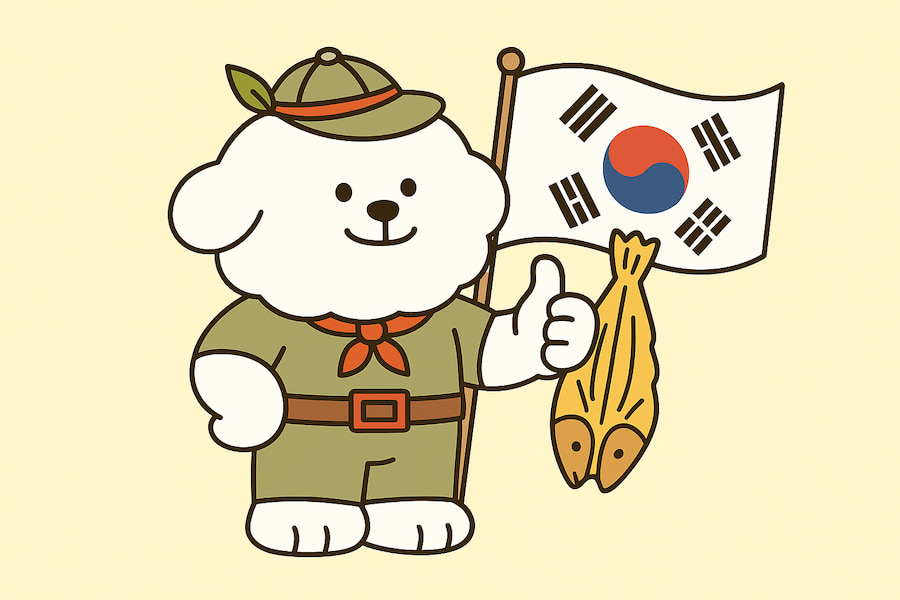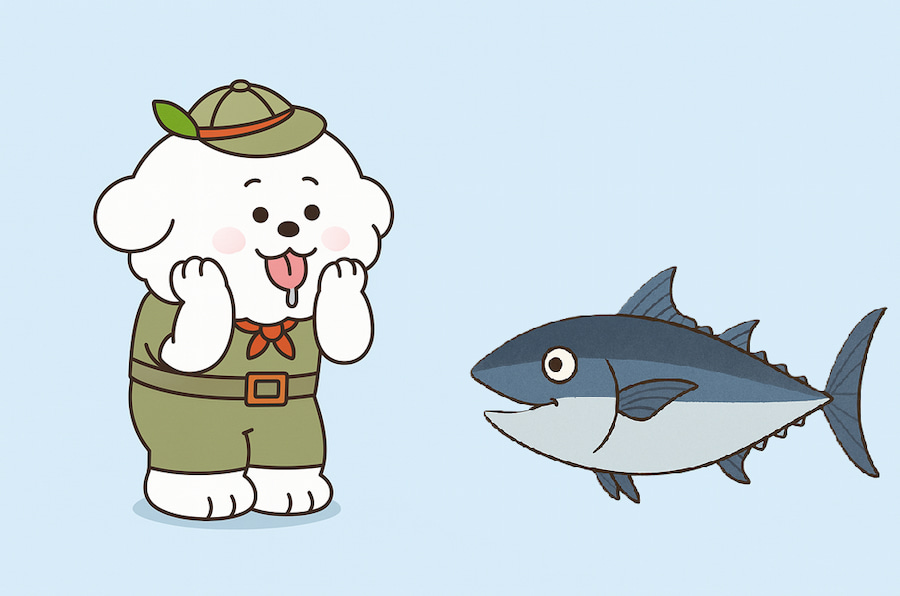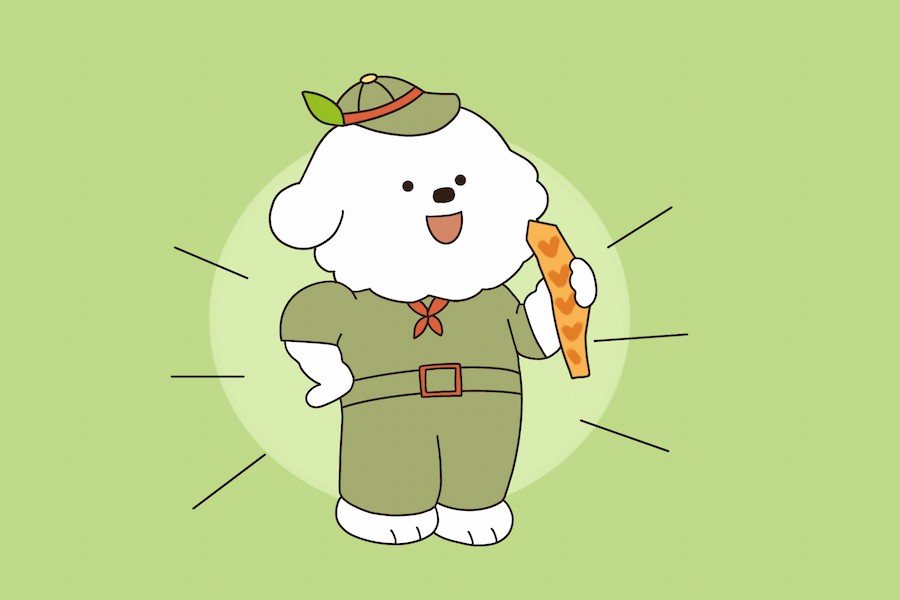Ever heard of Korean pollock? Personally, I think Korean pollock is an unsung hero in both Korean kitchens and now in dog treat aisles. In fact, the BBC once ranked Alaska pollock as the 19th most nutritious food on the planet. It’s a lean, protein-packed whitefish that’s been a staple in Korea for generations, and it’s starting to make waves as a healthy, hypoallergenic treat for dogs.
In this article, I’ll share what exactly Korean pollock is, why it’s so special (for people and pups alike), and how it became the latest premium ingredient in dog snacks. Let’s dive into the world of Korean pollock.

LeeAndPol‘s dog treats combine nutrient-rich korean pollock with a variety of freeze dried fruits and vegetables, such as blueberries or kabocha squash, to provide a more nutritious treat!
What is Korean Pollock?
Korean pollock refers to the Alaska pollock fish (scientific name Gadus chalcogrammus), known in Korean as 명태 (myeongtae). It’s a member of the cod family, found in cold northern Pacific waters. Historically, this fish was plentiful off Korea’s east coast, making it a beloved and affordable protein for Korean families.

Fresh pollock (myeongtae) has a mild, delicate flavor and off-white flesh, somewhat like its cousin the Atlantic cod.
But Koreans rarely stop at just the fresh fish – they’ve developed ingenious ways to preserve and enhance pollock by drying it. The most famous form is 황태 (hwangtae), often called dried pollock or yellow pollock. Hwangtae is pollock that’s been naturally freeze-dried in the frigid winter air, turning a golden yellow color (hwang means “yellow” in Korean). This process concentrates the flavor and nutrients, yielding a pleasantly chewy, flavorful fish that’s used in soups, stews, and snacks.

Korean pollock is rich in an amino acid called methionine that supports liver function and helps eliminate toxins.
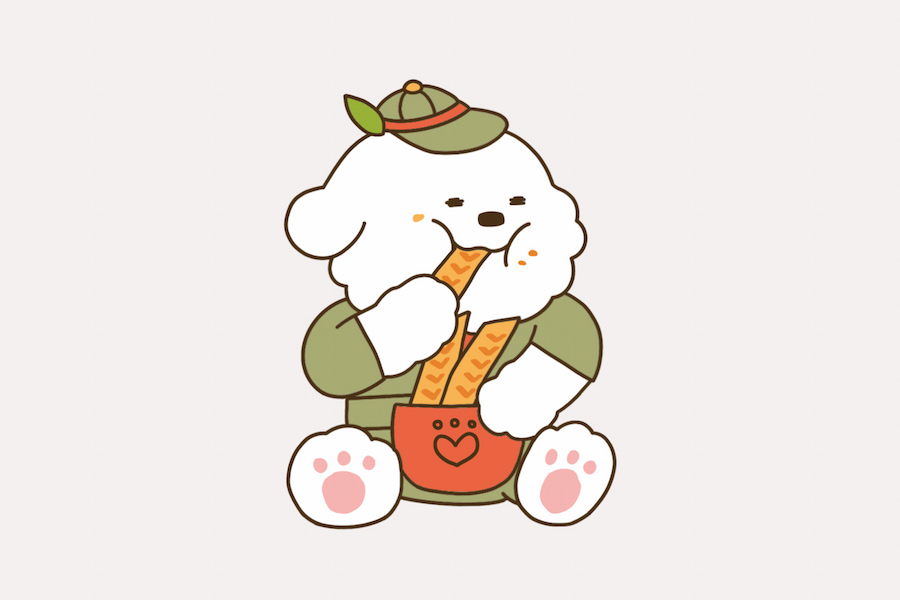
Myeongtae vs. Hwangtae
So, how is hwangtae different from the regular pollock (myeongtae)? It comes down to how the fish is processed:
- Myeongtae (명태) – This is the Korean name for fresh Alaska pollock. If the fish is caught and eaten fresh or frozen, it’s called myeongtae. Fresh pollock is often enjoyed in stews or simply grilled.
- Hwangtae (황태) – This refers to pollock that has been freeze-dried in winter. After catching, the pollock are gutted and hung outdoors during Korea’s coldest months to dry out slowly. The continual freezing at night and thawing by day in crisp mountain air transforms the fish. It takes on a deep yellow hue and a slightly sweet, concentrated flavor. Hwangtae is much softer and more flavorful than ordinary dried fish (called 북어, bugeo), thanks to this unique process.
In short, myeongtae is the fish itself, and hwangtae is the gourmet dried version of that fish. Koreans are so fond of pollock that they even have multiple other names depending on its state – for example, saengtae for fresh, dongtae for frozen, bugeo for traditionally dried, hwangtae for freeze-dried, and so on. (Yes, it’s a whole pollock lexicon!) But don’t get bogged down by the terminology.

The key point is that Korean pollock, especially in its hwangtae form, is a cherished ingredient – both delicious and considered wholesome.
How Korean Hwangtae Is Traditionally Made
If you’re wondering why hwangtae dried pollock is so special, just picture the scene of how it’s made. In the snowy mountains of Korea, there are villages famous for producing hwangtae. In winter, locals hang tens of thousands of pollock on tall wooden racks under the open sky. The fish are spaced out like fluttering flags, exposed to the elements. Each night, temperatures plunge below freezing, turning the fish into stiff boards of ice.

Each morning, the sun comes out and a dry mountain breeze flows, gently thawing the fish. This freeze-thaw cycle repeats every day for about four months.
Over this long winter, something magical happens: the pollock’s texture and flavor change gradually. The freezing breaks down the fibers; the thawing evaporates moisture. By spring, the fish have become light, golden, and perfectly dry. Villagers call the drying fields deokjang, and they know that the best hwangtae needs just the right mix of wind, cold, and snow. It’s fascinating (to me at least) that a fish dried out in brutal cold actually ends up soft and tender when rehydrated in cooking.

This traditional method yields hwangtae that’s prized for being extra chewy yet easy to tear, with a rich umami taste that plain dried pollock (dried in quicker ways) can’t match.
Culturally, this freeze-drying of pollock isn’t just about preserving food – it’s an art passed down through generations. In places like Yongdae-ri (a mountain village in Gangwon Province), families have been drying pollock like this for ages, and they even hold an annual Hwangtae Festival to celebrate the harvest of the dried fish.
From my perspective, hwangtae is more than food; it’s heritage. Now, here’s where it gets even more interesting: this very same hwangtae has found a new purpose beyond the Korean dinner table – it’s becoming a global premium ingredient for dog treats.

LeeAndPol offers homemade dog treats using only dried pollock prepared in the traditional Korean method!
Why Korean Pollock Is Gaining Global Attention as a Dog Treat
Korean pollock isn’t just a feel-good comfort food for people. Lately, it’s catching the eye of pet lovers and veterinarians worldwide – and I’m not surprised. We’re living in a time where pet parents (myself included) are obsessed with finding the healthiest treats for our fur babies.

We read labels, avoid common allergens, seek out “natural” and “single-ingredient” snacks. This is exactly where Korean pollock shines.
First off, pollock is widely regarded as a very safe fish to eat. It’s even recommended as a top choice for pregnant women because of its low mercury levels. (Fun fact: the FDA ranks wild Alaska pollock among the top five fish lowest in mercury and contaminants.) As far as I know, if a food is safe enough for expectant moms, it’s a good sign it’s safe for our dogs too!
That peace of mind is a big deal – it means you don’t have to worry about heavy metals or toxins accumulating in your pup over time. Pollock can be fed regularly without those long-term risks that come with some other fish. Personally, I feel great about treating my dog to pollock knowing it’s a clean, wholesome protein.
Secondly, pollock has a bit of a “superfood” status in Korea, and it’s crossing over into the pet world. It’s traditionally seen as a food that restores strength (hence giving it to people who are sick or hungover). Many Koreans even say dried pollock is so gentle that pregnant women eat it to help with nutrition and nausea.

With that reputation, pollock has been marketed as a premium ingredient for pet snacks – the idea is, if it’s good enough for a recovering human or a mom-to-be, imagine how good it must be for a dog!
In my opinion, this kind of reasoning resonates with health-conscious pet owners in the West. We’re always looking for the next high-quality, human-grade treat for our dogs, and Korean hwangtae fits the bill perfectly.
Another reason it’s getting global attention: pollock is a novel protein for many pets. In the U.S., typical dog treats are made of chicken, beef, pork, or maybe salmon. But lots of dogs develop sensitivities or allergies to those common proteins over time. I’ve met many owners of itchy, allergy-prone dogs who are desperate for an alternative treat their pup can enjoy.
Enter Korean pollock – an ingredient most dogs have never eaten before. Veterinarians often recommend novel proteins (ones the dog hasn’t been exposed to) to help with food allergies. Pollock is not commonly used in American dog food, so it’s much less likely to trigger an allergic reaction.

In fact, beef is reported to cause food allergies in about 34% of allergic dogs, whereas fish is a far less frequent offender.
An article in Animal Wellness Magazine even highlights that wild Alaska pollock is a hypoallergenic alternative to typical meats, making it less likely to cause upset tummies or itchy skin. In my view, this hypoallergenic aspect alone makes pollock treats golden for dogs with sensitive stomachs or skin issues.
Lastly, I have to mention the nutritional punch that pollock packs, which benefits dogs just as it does humans. Pollock is loaded with quality protein, essential minerals, and even omega-3 fatty acids like EPA and DHA. Those omega-3s and calcium in pollock support a dog’s heart, brain, joints(such as patellar luxation), skin, and coat health – basically a whole-body boost. Wild pollock is a lean fish, so it provides those benefits without a lot of fat or calories.
As far as I can tell, that’s a win-win, especially if you’re watching your dog’s weight. There’s a reason one of the big pet food trends for 2025 is using pollock in weight-management dog foods and treats – it’s high-protein and low-fat. Let’s break down some of these advantages in a bit more detail, and compare Korean pollock to the usual fare in the dog treat aisle.
3 Big Benefits of Korean Pollock for Dogs
Now that we know why Korean pollock is gaining popularity, let’s summarize its top advantages as a dog treat, especially compared to more common Western dog treat ingredients:
1. Low Allergenic Potential
If your dog has food allergies or sensitive skin, pollock could be a game-changer. Common treat proteins like beef or chicken are among the most frequent dog allergens (beef alone triggers allergies in roughly one-third of food-sensitive dogs). Pollock, on the other hand, is a novel protein for most dogs and is considered hypoallergenic. In my opinion, this means less itching, scratching, and gastrointestinal upset. I’ve seen dogs that can’t tolerate beef or chicken gobble up pollock treats with zero issues. It’s gentle on the tummy and unlikely to cause adverse reactions.

For any pet parent dealing with an allergic pup, a single-ingredient fish treat like pollock is a breath of fresh air.
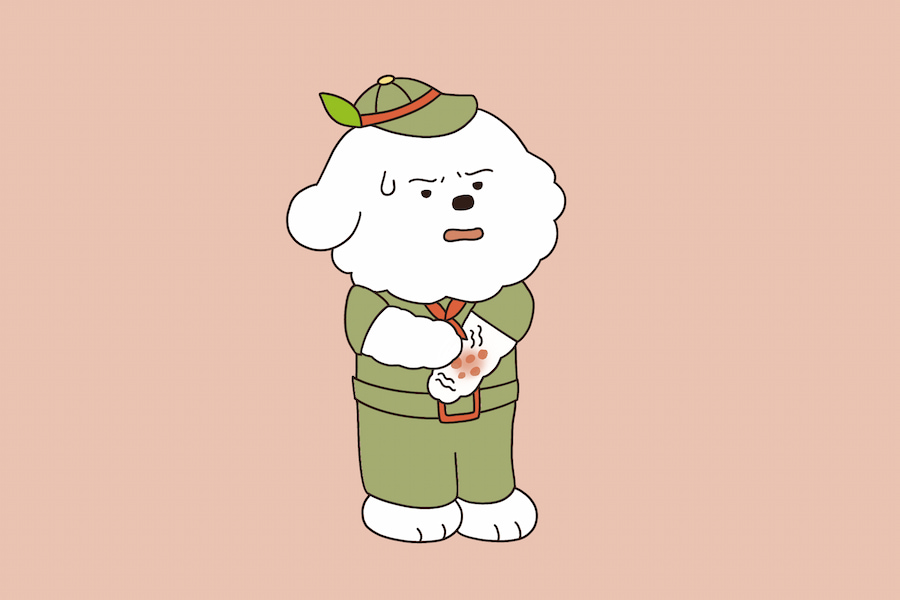
2. High Protein & Low Fat
Nutritionally, pollock is a lean protein superstar. Dried pollock is basically pure fish meat, so it’s very rich in protein but naturally low in fat. To put it in perspective, 100 grams of pollock contains about 23.5 grams of protein and only around 1 gram of fat, whereas the same amount of salmon has ~12 grams of fat. That’s almost 90% less fat than salmon! And pollock’s protein content is on par with, or even slightly higher than, salmon or tuna.
Compared to red meat treats, pollock has virtually no saturated fat to speak of. What does this mean for your dog? It means you can offer a nutrient-dense treat that supports muscle maintenance and overall health, without adding many extra calories or worrying about pancreatitis from high-fat snacks. For example, I often recommend pollock treats for overweight dogs or breeds prone to pancreatitis, since it’s a safer option than something like a beef jerky strip.

Plus, the protein in fish is highly digestible for dogs, so they get maximum nutritional benefit from each bite.

3. Single Ingredient & All-Natural
One huge advantage of Korean pollock treats is what isn’t in them. They are typically single-ingredient treats – just pure dried fish, nothing else. If you’re like me, you probably get uneasy reading long ingredient lists full of additives, preservatives, or mystery fillers in dog treats. With dried pollock, there’s no such worry.

There are no grains, no gluten, no artificial colors or flavors, and no preservatives needed to keep it fresh.
In fact, authentic Korean hwangtae is traditionally dried without even salt , sugar or seasoning – it’s just the fish itself, preserved by cold air. That means when you give your dog a piece of Korean pollock, you know exactly what they’re eating. From my perspective, this transparency is a big plus.
Many veterinarians also note that single-ingredient treats are ideal for dogs with dietary sensitivities because they minimize the chances of an offending ingredient sneaking in. Another practical perk: dried pollock has a nice chewy-crispy texture that dogs find fun, and it can help clean their teeth as they gnaw, much like a dental chew (but without added chemicals).
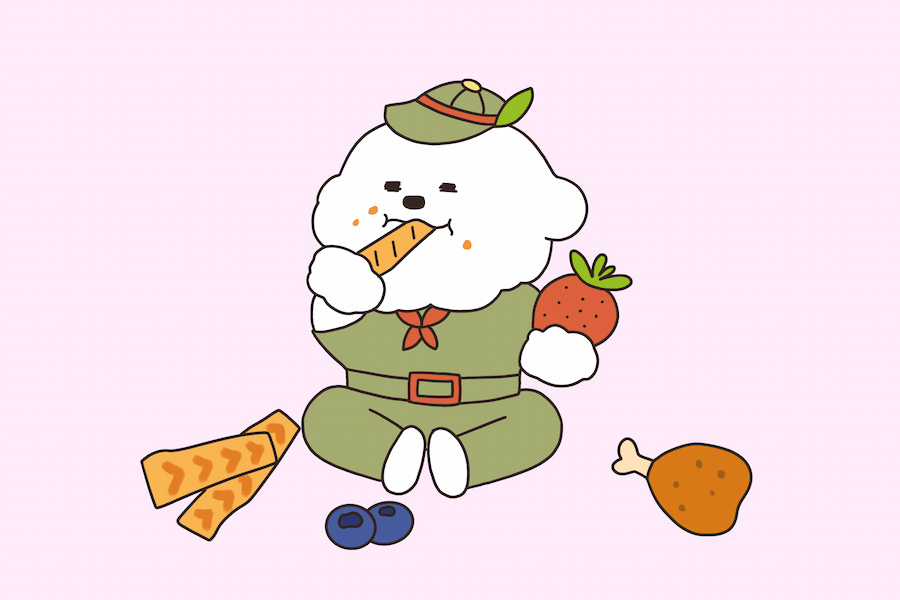
With benefits like these, it’s clear why Korean pollock has earned the nickname “premium” in the pet treat market. But if you’re now eager to get some for Fido, you might be wondering where on earth to find it. Let’s address that next.
Where to Buy Korean Pollock Treats for Dogs
Despite all its wonderful qualities, Korean pollock treats are still a niche find outside of Asia.

If you stroll into a typical pet store in America or Europe, you’re unlikely to see “dried pollock” on the shelves (at least not yet).
I’ve found a few U.S. pet brands offering Alaskan pollock dog treats, but they’re not very common in brick-and-mortar stores. Most Western dog owners first hear about Korean pollock through online communities or perhaps from Korean friends. So, where can you get it?
Currently, Korean pollock treats might not be widely available at your local PetSmart, but the good news is you can purchase them online.

If you’re in the U.S., look for online pet boutiques or our brand’s official website (leeandpol.com) to find these products.
Conclusion
Korean pollock ticks all the boxes: it’s nutrient-rich, low in fat, unlikely to trigger allergies, and free of junk additives. Plus, it carries a bit of cultural charm, knowing the care that goes into every freeze-dried fillet.
Personally, I’ve integrated Korean pollock treats into my own dog’s routine and have seen the benefits firsthand – a healthier coat, zero digestive troubles, and an overjoyed pup whenever I reach for that crinkly pollock bag. It seems to me that our dogs deserve the same quality of food that we seek for ourselves, and pollock is exactly that kind of quality.
In conclusion, if you’re looking to pamper your pup with a tasty yet healthy snack, Korean pollock is definitely worth a try. It brings a piece of Korean tradition into your home and offers your dog a fishy flavor adventure that’s as nutritious as it is delicious.
FAQs
No, it’s not advisable. Fresh or dried pollock bones can be a choking hazard and may splinter, risking injury to your dog’s mouth or digestive tract. Always remove any bones from fish before feeding it to your pup. If you buy dried pollock treats, choose those that are fillet-only (boneless) for safety.
Yes, korea pollock is generally very safe for dogs when properly prepared. It’s a low-mercury fish (much lower in mercury than tuna or swordfish) and is usually given to dogs in cooked or dried form, which eliminates parasites. As long as it’s plain (no heavy seasoning or salt) and bone-free, pollock is a healthy, safe treat. In fact, its nutritional profile – lean protein with omega-3s – makes it a vet-recommended fish for canine diets in moderation.
Yes, in my opinion pollock is an excellent choice for dogs with food allergies or sensitivities. It is considered a hypoallergenic protein since most dogs have not been exposed to it before, and it’s less likely to trigger reactions compared to common allergens like beef, chicken, or dairy. Many hypoallergenic or limited-ingredient pet diets include fish like pollock for this reason. Always introduce any new food gradually, but pollock treats are a top pick for allergic pups.
Offer pollock treats in moderation. Even though they’re healthy and low-fat, treats should only make up about 10% of your dog’s daily calorie intake. For example, you might give a small dog a couple of bite-sized pollock pieces a day, or a larger dog a few more – just keep portions reasonable. I typically use dried pollock as a high-value reward or a weekly treat. Remember, moderation ensures your dog gets nutritional balance from their regular food and prevents overindulgence.
Korean pollock treats are still relatively new in Western markets, so they’re not widely available in big pet store chains. However, you can buy them through specialty pet retailers online. Look for phrases like “100% pollock dog treats” or brands that focus on single-ingredient natural treats. One notable brand is LeeAndPol, which sells authentic Korean hwangtae treats (you can purchase from their website, and they ship to the US and other countries). Additionally, a few boutique pet shops or online marketplaces may carry freeze-dried pollock snacks. Just be sure to choose a reputable source to ensure you’re getting chemical-free, genuine pollock for your pup.
